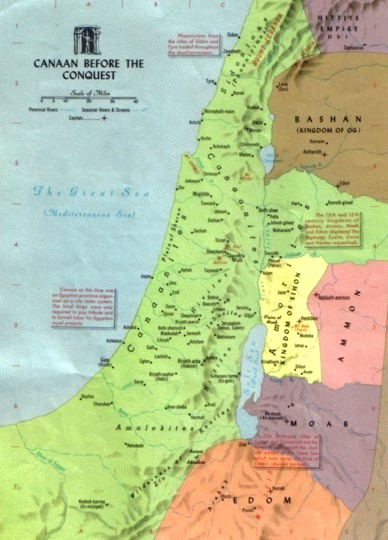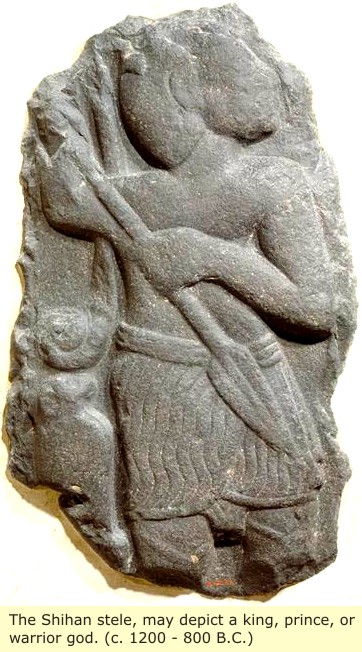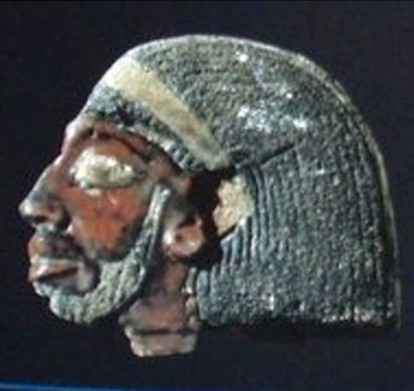


Ancient Canaan was probably the first place, outside of Africa, where ancient man first became "settled" (Agricultural). Archeological excavations have shown evidence of human habitation in Canaan, from Paleolithic and Mesolithic times. At the site of the ancient city of Jericho, evidence reveals a settled community and an agricultural way of life had existed there, since about 9,000 B.C.
By about 7000 B.C. Jericho had developed into a large settlement which may have contained as many as two thousand individuals, and was defended by a substantial wall. The dead were often buried beneath the floors of houses. In some instances the bodies were complete, but in others the skull was removed and treated separately, with the facial features reconstructed in plaster.
The removal of the skull from the body and its separate burial was widely practised in the Levant during the seventh millennium B.C. the skull was remodelled with plaster to build up the facial features. Shells, either cowries or bivalves, were set into the empty sockets to represent the eyes. The skull was decorated with red and black paint to depict individual characteristics such as hair and even moustaches. It is possible that this practice was part of an ancestor cult. Similarly plastered skulls have been found at sites in Palestine, Syria and Jordan.
Jericho Plaster Skulls
By about 4,000 B.C, there existed small settlements of farming people who built mud-brick houses and some underground dwellings. In the Early Bronze Age, the inhabitants of Canaan, built the first walled towns. These towns were small with walls of rough stones or unbaked mud brick. The town were surrounded by peasant farmers growing a range of local horticultural products, along with commercial growing of olives, grapes for wine, and pistachios, surrounded by extensive grain cropping, predominantly wheat and barley. Harvest in early summer was a season when transhumance nomadism was practiced — shepherds staying with their flocks during the wet season and returning to graze them on the harvested stubble, closer to water supplies in the summer.
As time progressed, the fortifications in these early towns grew more complex. By the end of the Early Bronze Age, some towns were surrounded by double and triple walls, for defense. Families lived within these city walls, in houses clustered around courtyards. The existence of these heavily fortified city walls, is evidence that this was not a peaceful period. Evidence seems to indicate that they buried their dead in stone dolmens.
By the Middle Bronze Age (2,000 B.C.) Canaan was an Egyptian province, but there was apparently great wealth and strong self-government for each individual city-state. The wealthy aristocratic rulers embellished their cities with large-scale, public buildings, temples and palaces. They also decorated their palaces and temples with beautiful wall paintings. Their pottery was now elaborate in style, and beautifully painted or sculptured. They also smelted copper.
Later, town planning was also in effect, evidenced by paved streets that were built in a grid pattern. Cities were now surrounded by huge fortifications, with ramparts built to defend against battering rams. By now people buried their dead with elaborate rituals, in caves, with several generations of family members placed in the same tomb. Rich goods were found with these burials, including pottery vessels, wooden containers, weapons, tools and jewelry.
| The Levant refers to the area which includes modern Lebanon, Israel, Palestine, Syria, Jordan and northern Arabia. |
Ceramic tiles depicting Levant people: from the temple of Ramesses III ( Reign 1186–1155 B.C.) 20th Dynasty.



















No comments:
Post a Comment